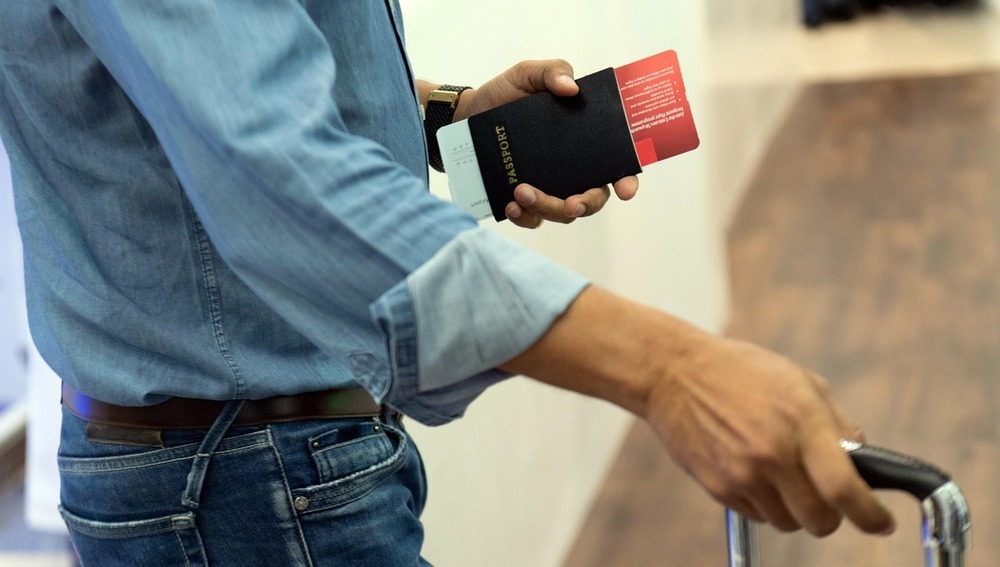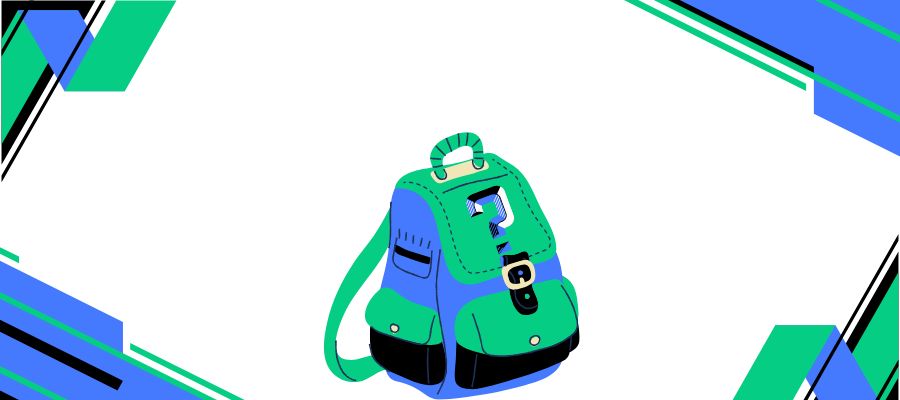Air travel can be stressful enough without the added worry of having items confiscated at the security checkpoint. So, what exactly is allowed in your carry-on bag? Knowing the rules ahead of time can save you from the frustration of watching a favorite item disappear into a bin of prohibited items.
In this comprehensive guide, we’ll walk you through exactly what the TSA allows in your carry-on, from personal care items to electronic devices and everything in between. With this information at your fingertips, you can pack smarter and travel more confidently, ensuring a smooth journey from takeoff to landing.

Quick Reference: What You Can and Can’t Pack in Your Carry-On
| Category | Allowed in Carry-On? | Key Restrictions |
| Liquids & Gels | ✅ Yes (3-1-1 rule applies) | Max 3.4 oz per container, all in 1 quart bag |
| Solid Food & Snacks | ✅ Yes | No restrictions unless entering certain countries |
| Electronics | ✅ Yes | Must be removed at security screening |
| Medical Items | ✅ Yes (some exemptions) | Declare liquid medications at security |
| Sporting Equipment | ⚠️ Limited | Some items must be checked |
| Self-Defense Items | ❌ No | Must be packed in checked luggage |
| Sharp Objects & Weapons | ❌ No | Strictly prohibited in carry-on |
TSA Rules and Regulations
It’s important to learn and adhere to TSA’s regulations and guidelines for the smooth operation of airport security procedures. These etiquettes and their related norms have been established to help improve security and ensure that travelers are safe. These regulations apply to all carry-on luggage, such as suitcases, bags, and laptop cases, that you plan to take through security at the airport. If you’re unsure about the size limits for your carry-on bag, you can check “What size bag Is allowed for hand luggage?” to avoid any confusion. Knowing the air passenger rights related to what you can and cannot carry ensures that you don’t face unnecessary hassles during security checks. Additionally, having valid identification is crucial for passing through security. But in cases where you forget or lose your ID, you may wonder, “Can you fly without an ID?” Under certain conditions, you still can, though it may involve extra screening.
At the center of these regulations is the 3-1-1 rule, a philosophy guiding the TSA in its approach to regulating the transportation of liquids, gels, waxes, creams, and pastes in carry-on luggage. Here’s how it works:
- 3: Each traveler is permitted to carry travel-sized containers that do not exceed 3.4 ounces (100 milliliters) of liquid. This restriction is pivotal to the TSA policy, ensuring that only small amounts of liquids are brought on board. Duty free liquids purchased after clearing security are allowed in reasonable quantities.
- 1: All such containers must be placed in a single, quart-sized, sealable bag, streamlining the screening process.
- 1: Only one quart-sized bag is allowed per passenger, regardless of the number of carry-on items.
Keep in mind that one extra carry-on doesn’t equate to an allowance for more items that are otherwise prohibited. Containers larger than 3.4 ounces still cannot be included, even if partially filled. Medically necessary liquids and liquid baby food are allowed, but passengers must notify a TSA security officer of such items on their person.
What Is Allowed in Your Carry-On Bag?

Personal Care
When packing personal care items for your flight, navigating what you can bring on a plane carry-on becomes a task that requires careful attention to detail. Most importantly, the TSA’s 3-1-1 rule applies specifically to liquids, gels, and aerosols. Knowing the specifics will assure you that not only will you meet airport security requirements, but you’ll also be able to maintain your personal care routine while traveling.
Here’s a rundown of a few common personal-care items with some flying restrictions so that you can travel with confidence.
| ITEM NAME | ALLOWED ON CARRY-ON? | LIMITATIONS |
| Hairspray | Yes | Must be in 3.4-ounce containers or smaller, including powdered and aerosol spray |
| Hair Gel | Yes | Must be in a 3.4-ounce container or smaller |
| Scissors | Yes | Must be less than 4 inches long from the pivot point |
| Electric Toothbrush | Yes | None. Allowed on planes |
| Razors | Yes | Disposable cartridges allowed; safety razors and straight razors are not |
| Curling Iron | Yes | One per person, with a safety cover and protection from accidental activation |
| Makeup | Yes | Liquid, lotion, gel, paste, or creams must adhere to the 3.4-ounce rule |
| Electric Razors | Yes | None; allowed on planes |
| Nail Clippers | Yes | None; allowed on planes |
| Perfume | Yes | Must adhere to the 3.4-ounce rule |
| Spray Deodorant | Yes | Liquid deodorants must adhere to the 3.4-ounce rule |
| Stick Deodorant | Yes | None; allowed on planes without restriction |
| Shaving Cream | Yes | Must adhere to the 3.4-ounce rule |
For a complete and updated list of items allowed in carry-on luggage, you can visit the official TSA guide.
Food and Drink
Packing food and drinks for your flight is a great way to have your favorite snacks and beverages handy, especially on long journeys. However, what can you bring on a plane in terms of edibles? The TSA guidelines, though very clear about the 3-1-1 rule regarding liquids, are a bit more lenient when it comes to solid food items. Now, let’s delve into what food and drink items you can carry on so you always stay refreshed and full during the flight.
| ITEM NAME | ALLOWED ON CARRY-ON? | LIMITATIONS |
| Sandwiches | Yes | None; you can bring sandwiches on a plane |
| Fresh Fruit | Yes | None; however, be mindful of agriculture restrictions for international flights |
| Cheese | Yes | Solid cheese is allowed without restriction; creamy cheese must adhere to the 3.4-ounce rule |
| Bottled Water | Yes | Must be purchased after security or in 3.4-ounce containers if brought from home |
| Soda/Canned Drinks | Yes | Must be purchased after security |
| Baby Formula/Breast Milk | Yes | Exempt from the 3.4-ounce rule but subject to screening |
| Alcohol | Yes | Must be in 3.4-ounce containers if brought from home; larger quantities can be purchased after security |
Sporting Equipment
Whether you are traveling to a competition or simply plan to enjoy your favorite sports during a vacation, it is important to know what the TSA regulations are concerning sporting goods. Not everything will be allowed in your carry-on because of its size and the fact that some items could pose a safety hazard. Here’s a guide to help you pack wisely and ensure your sporting equipment makes it to your destination without issue.
| ITEM NAME | ALLOWED ON CARRY-ON? | LIMITATIONS |
| Baseball Bat | No | Must be checked as it can be used to bludgeon |
| Balls | Yes | None |
| Hiking/Ski Poles | No | Must be checked due to potential use as a weapon |
| Golf Clubs | No | Must be checked due to size and potential use as a weapon |
| Pool Cues | No | Must be checked as it can be used to bludgeon |
| Fishing Poles | Yes | Check with the airline for size limitations |
| Fishing Lures | Yes | Large, sharp tackle must be in checked luggage |
| Bows and Arrows | No | |
| Canoe/Kayak Paddles | No | |
| Longboards/Skateboards | Yes | Check with the airline to determine if it meets the size limitations |
| Skis/Snowboards | Yes | If it meets the size limitations; most will need to be checked |
| Tennis Racket | Yes |
Self-Defense Items
When packing for a trip, it’s natural to consider your safety and ponder what can you bring on a plane carry-on for self-defense. While security is a top priority for all travelers, the Transportation Security Administration (TSA) has strict rules regarding self-defense items in carry-on luggage. These regulations are in place to ensure the safety and security of all passengers aboard the aircraft. Here’s a concise guide to understanding what is not allowed on a plane carry-on when it comes to self-defense items, and how to properly pack them if necessary.
| ITEM NAME | ALLOWED ON CARRY-ON? | LIMITATIONS |
| Knife | No | Plastic or round-bladed butter knives are allowed |
| Pepper Spray/Mace | No | Only allowed in checked luggage and must meet the airline’s requirements |
| Bear Spray | No | |
| Taser | No | Must be in checked luggage, inoperable, and not contain lithium batteries |
| Pocket Knife | No | |
| Brass Knuckles | No | Previously noted as allowed, but corrected for accuracy; must be checked |
E-Cigarettes and Vaping Devices
E-cigarettes and vape pens have become increasingly popular with travel enthusiasts, but the specific hazards associated with their batteries have prompted the TSA to establish clear guidelines for individuals who use the devices. Here’s a quick reference for those wondering what can I bring on a plane regarding e-cigarettes and vaping devices.
| ITEM NAME | ALLOWED ON CARRY-ON? | LIMITATIONS |
| Cigarettes | Yes | Smoking on the plane is prohibited |
| Disposable Vape/Pen | Yes | Usage on the plane is prohibited. Lithium batteries must not exceed 100 Wh |
| Cartridge Vape | Yes | Usage on the plane is prohibited. Lithium batteries must not exceed 100 Wh |
| Loose Tobacco | Yes | Be mindful of international import rules when flying internationally |
| Cigars | Yes | Smoking on the plane is prohibited |
| E-Cigarettes | Yes | Usage on the plane is prohibited |
| Pipes | Yes | Intended for tobacco use only; presence of other substances can lead to serious penalties |
Medical Items
If you require medically necessary liquids or other essential health-related items, it’s crucial to pack them appropriately. The following chart presents detailed guidelines on how to carry specific medical aids, showing what may be taken in carry-on luggage and what is allowed in checked bags.
| ITEM NAME | ALLOWED ON CARRY-ON? | LIMITATIONS |
| Blood Sugar Test Kit | Yes | Allowed in both carry-on and checked bags |
| Canes | Yes | Allowed in both carry-on and checked bags |
| Casts | Yes | Allowed in both carry-on and checked bags |
| Contact Lens Solution | Yes | Allowed in both carry-on and checked bags; 3.4oz/100ml limit applies in carry-on |
| Contact Lenses | Yes | Allowed in both carry-on and checked bags |
| External Medical Devices | Yes | Special instructions apply; consult airline before travel |
| Eye Drops | Yes | Less than or equal to 3.4oz/100 ml allowed in carry-on; allowed in checked bags |
| Inhalers | Yes | Special instructions apply; allowed in checked bags |
What Is Not Allowed on a Plane Carry-On
When packing for a flight, it’s just as important to know what is not allowed on a plane carry-on as it is to know what you can bring. The TSA enforces strict guidelines to ensure the safety and security of all passengers. This means certain items are strictly prohibited in your carry-on luggage. Here’s an overview of items you’ll need to leave out of your carry-on bags or prepare to check:
- Alcoholic Beverages: Any alcoholic beverage over 140 proof (70% alcohol) is not allowed.
- Weapons: This category is broad, including knives of any kind (pocket, Swiss army, utility, kirpans, razor-type blades), guns (BB, cap, pellet, compressed air), ammunition, gun powder, axes, hatchets, bows and arrows, firearms, rifles, martial arts weapons, and realistic replicas of weapons.
- Self-Defense Weapons: Items intended for personal protection such as kubatons, pepper spray, brass knuckles, blackjacks, night sticks, stun guns, shocking devices, and tactical pens are prohibited in carry-on luggage.
- Explosives: Any item capable of creating or simulating an explosion is banned, including bang snaps, dynamite, English Christmas crackers, firecrackers, fireworks, flare guns, flares, hand grenades, party poppers, sparklers, and vehicle airbags.
- Sporting and Exercise Equipment: Objects that could be used as a bludgeon, such as clubs, bats, hockey and walking sticks, canoe and kayak paddles, bowling pins, darts, hiking and ski poles, ice axes, ice picks, shoe and snow spikes, snow cleats, and starter pistols, must be checked.
- Medical Items and Equipment: Certain items, including battery-powered wheelchairs and mobility devices (with specific regulations), gel heating pads, and mercury medical-clinical thermometers, have restrictions or are not permitted in carry-on luggage.
- Tools: Tools such as box cutters, crowbars, drills and drill bits, hammers, nail guns, saws, and screwdrivers longer than 7 inches must be transported in checked luggage.
- Flammable Gases and Liquids: Packing engines and engine-powered equipment, fire extinguishers, compressed gas cylinders, fuels, spillable batteries, strike anywhere matches, flammable paints, turpentine, and paint thinner in carry-on luggage is forbidden.
- Miscellaneous: Safety razors (including blades) and gel-type candles are also not permitted in carry-on bags.
Always check the latest TSA guidelines and consider things allowed in hand carry baggage to ensure you are fully compliant with all travel regulations.
Final Thoughts
As we conclude our guide to what you can pack in a plane carry-on — and for whom you must pack it — it’s important to remember that the TSA rules and the 3-1-1 rule for liquids are only the beginning of the guidelines on packing your carry-on luggage. Alongside these rules, ensuring that you have your boarding pass readily accessible is equally important, as it’s your gateway through airport security and onto your flight. Individual airlines may have further restrictions or allowances, like carry-on luggage size limits and carry-on bag weight restrictions, which will influence how you pack. Then again, international travel adds further complications, in that what is permitted in a carry-on bag can differ markedly from country to country.
Before you even board a plane, you need to understand TSA policy, your airline’s requirements, and the destination country’s entry rules. Not only will being prepared save you a lot of hassle, but it will also mean you can fully enjoy the more fun parts of your trip, with a much smoother and far less stressful journey as a result!
But as constraining as some may feel, these rules keep all of us safe with wings and wheels. Your awareness and attention to what you take on board is yet another way you positively impact a safer journey. Bon voyage!
